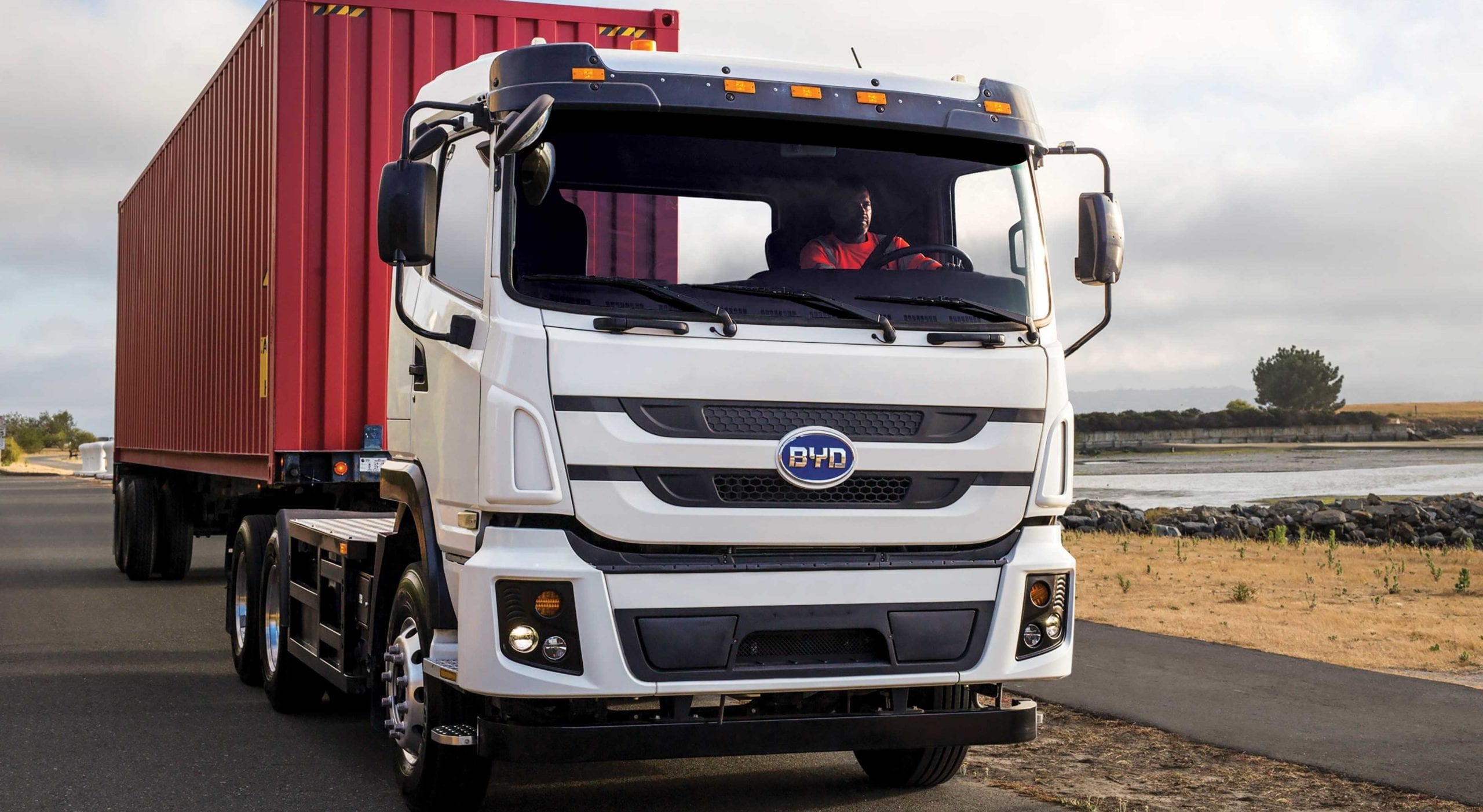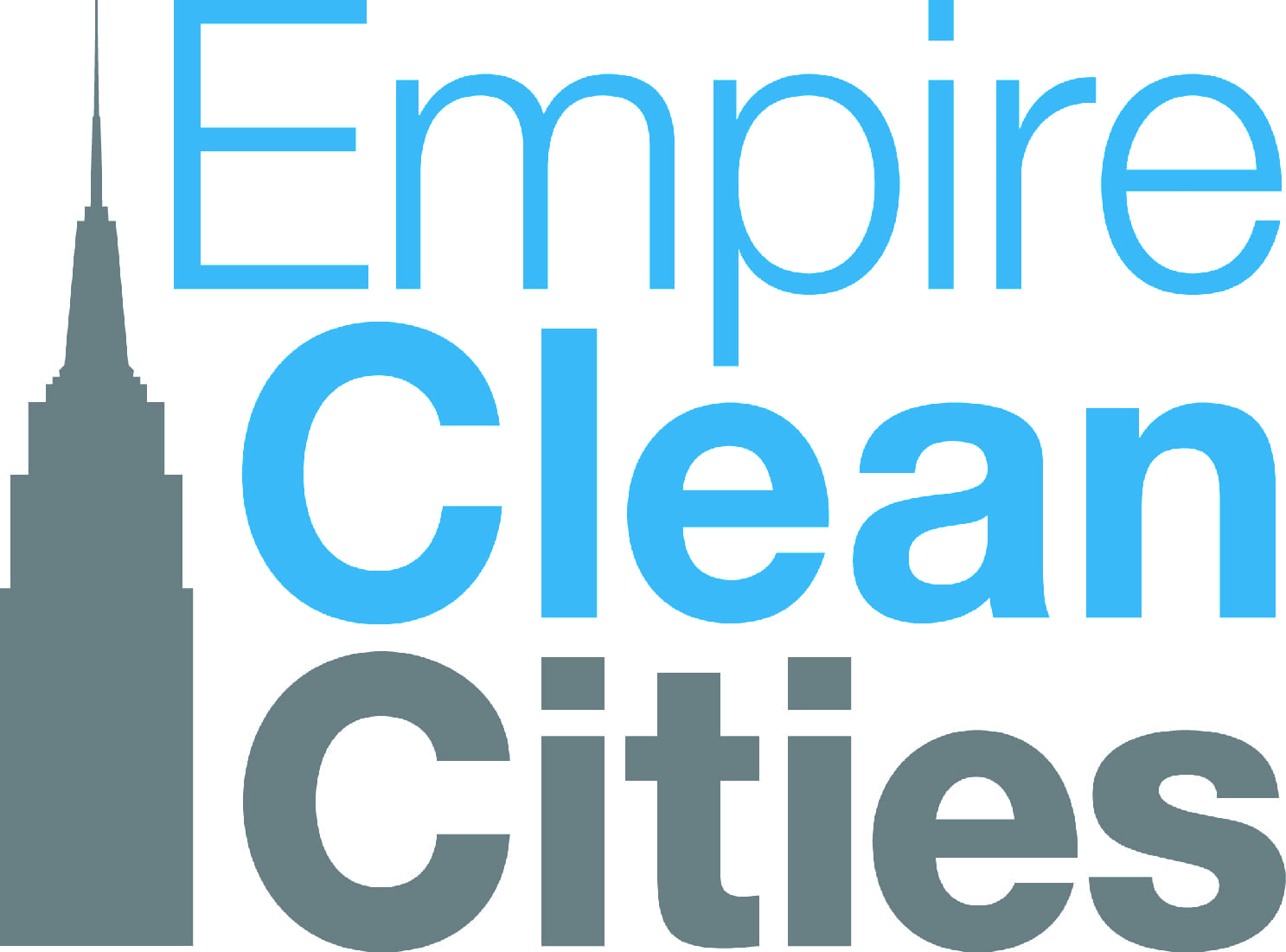On December 9, New York State Clean Cities Coalitions hosted an all-day virtual event, Electrifying Medium- & Heavy-Duty Trucks in New York, which included a series of dynamic presentations and panels for the more than 500 registrants, with speakers from 15 original equipment manufacturers (OEMs), New York-based utilities, energy and engineering firms, nonprofit organizations, and local municipalities.
The event was hosted by six NYS Clean Cities coalitions: Empire Clean Cities (New York City and Lower Hudson Valley); Clean Communities of Central New York (Syracuse); Capital District Clean Communities (Albany); Clean Communities of Western New York (Buffalo); Greater Rochester Clean Cities (Rochester); and Greater Long Island Clean Cities Coalition (Long Island). These coalitions are part of the U.S. Department of Energy’s Clean Cities program with approximately 90 coalitions nationwide. The Clean Cities network works locally to foster the nation’s economic, environmental, and energy security by working to advance affordable, domestic transportation fuels, energy efficient mobility systems, and other fuel-saving technologies and practices.
The Clean Cities Coalitions are part of the U.S. DOE’s Clean Cities program, working to advance cleaner transportation options.
Transportation is currently the leading cause of greenhouse gas emissions in New York, and state regulations are increasingly calling for cleaner transportation—specifically, electrifying medium- and heavy-duty vehicles. With California mandating that half of trucks sold by 2035 be zero-emissions, New York is on track to follow suit with similar mandates. In preparation for this transition, fleets and businesses must be made aware of available technology and funding opportunities to help offset costs for vehicles and infrastructure.
Four Sessions Included Presentations from Industry Experts
The virtual event was organized into four sessions and included panel presentations from industry experts and a Q&A session. The first session, Overview of Funding Opportunities in New York State, featured a brief overview on how Clean Cities can help support fleets, followed by presentations covering the New York Truck Voucher Incentive Program (NYTVIP) and New York City Clean Trucks Program (NYC Clean Trucks Program); and National Grid, covering the utility’s Make-Ready and other electric-vehicle (EV) programs.
The NYTVIP and NYC Clean Trucks Program are part of the state’s Volkswagen Settlement Plan that provides funding for the electrification and transition to cleaner alternative fuels in the medium- and heavy-duty vehicle sectors. The state’s plan has an overall goal of improving air quality and reducing nitrogen oxides (NOx), greenhouse gases, particulate matter, hydrocarbons, and mobile source air toxic emissions. Projects described in New York’s plan will result in significant NOx reductions while accelerating the transformation to a zero-tailpipe-emission transportation system. Ben Mandel from CALSTART presented on behalf of NYTVIP’s administrators, the New York State Energy Research and Development Authority (NYSERDA). The program aims to permanently remove older, polluting diesel trucks from New York’s roadways by providing vouchers to fleets across the state for the replacement of older diesel vehicles with the purchase or lease of electric, conventional hybrid electric, compressed natural gas, or propane medium- and heavy-duty vehicles. A full list of eligible replacement vehicles can be found here.
The NYC Clean Trucks Program and NYTVIP are part of New York’s VW Settlement Plan.
In comparison, Susan McSherry of the New York City Department of Transportation presented the recently launched NYC Clean Trucks Program. Similar to the NYTVIP, this program offers rebate incentive funding to reduce diesel exhaust emissions by replacing older, heavy polluting diesel trucks with new battery-electric or EPA-emission-compliant alternative fuel and new diesel trucks. Funding from the program is available for fleet applicants located or doing business in 20 program-approved industrial business zones in New York City’s five boroughs. The session closed with a discussion on National Grid’s Make-Ready program and how to access funding for up to 100% of electric infrastructure associated with new EV charging stations.
Attendees Learned of Commercially Available Electric Truck Options
The second and third sessions included presentations from commercial, refuse, utility, and off-road vehicle OEMs. Attendees heard about electric truck options from Motiv Power Systems, Lightning eMotors, BYD, OrangeEV, and the Lion Electric Co. According to the panelists, fleet owners can save up to 75% in maintenance costs, contributing to a savings of over $60,000 per truck, per year in fuel and maintenance. Kurt Neutgens, president and CTO of OrangeEV, highlighted this, stating, “We are proud, like many others, of having 100% electric trucks. They’re safer, have faster-stopping distance, are more reliable, and are lower cost. The drivers and management both like the advantages.” Electric-vehicle innovation is broadening beyond commercial trucks into other applications and into utility vehicles, all currently available to New York stakeholders.
Global Energy Groups Discussed EV Charging Infrastructure
The final session covered the EV charging infrastructure needed for successful deployment of a medium- or heavy-duty EV fleet. Speakers included representatives from Wendel and Black & Veatch, both globally renowned energy groups with a legacy of innovations in sustainable infrastructure. If fleet managers are to transition from diesel to electric vehicles, it is imperative that reliable charging infrastructure exists around state. Depending on the size of the fleet and electric capacity required for fleet charging, there can be a period three to 24 months where electrical grids need time for upgrades to meet the new demand. Large-scale fleet electrification will likely be a lengthy process for most fleet managers. Alex Bettencourt, management consultant at Black & Veatch, warns that such projects cannot occur without proper planning.
Fleet electrification is expected to save 10-20% compared to diesel fleet operations.
“When we say plan ahead for fleet electrification, we mean three to five years ahead, so that fleet purchases, power requirements, and other electrification step necessities can be incorporated,” he said.
Furthermore, the cost of charging will depend upon vehicle energy consumption, frequency, and the charging site, making it difficult to give a preliminary estimate to a fleet. However, electrification should not be discouraged. Fleet electrification is still less costly than diesel vehicles; the total cost of operation is still expected to save fleet managers 10-20% compared to a diesel operation.
New York State Clean Cities Coalitions’ mission is to promote the advancement of alternative fuels and the electrification of fleets across the state. All fleets or other entities interested in learning more about the mentioned incentives or EVs are encouraged to contact their local coalition. To access the session recordings, please visit empirecleancities.org/electrifying-mdhd-trucks-in-new-york. To learn more about EVs or events, visit Empire Clean Cities website.



